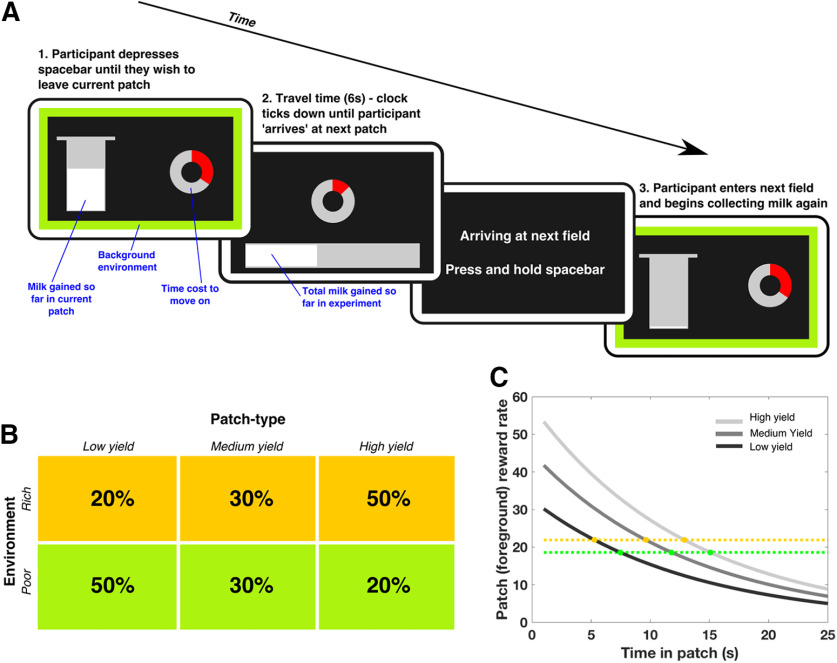Figure 1.
Patch leaving paradigm. A, Participants had to decide how long to remain in their current patch (field), in which reward (milk) was returned at an exponentially decreasing rate (displayed on the screen by continuous filling [white bar] of the silver bucket), before moving on to the next patch, which incurred a fixed cost of 6 s during which they could collect no reward. Their goal was to maximize milk return across the whole experiment. The instantaneous rate of bucket filling indicated the foreground reward rate, whereas the colored frame indicated the distribution of different patch types and their average value, and thus the background reward rate. Participants were aware they had ∼10 min in each environment (which were blocked), but were not shown any cues to indicate how much total time had elapsed. Following a leave decision, a clock ticking down the 6 s travel time was presented. B, Three foreground patch types were used, differing in the scale of filling of the milk bucket (low, medium, and high yield), which determined the foreground reward rate. Two different background environments (farms) were used, with the background reward rate determined by the relative proportions of these patch types. The rich environment contained a higher proportion of high-yield fields, and a lower proportion of low-yield ones, meaning it had a higher background reward rate than the green farm, which had a higher proportion of low-yield fields. C, According to MVT, participants should leave each patch when the instantaneous reward rate in that patch (gray lines) drops to the background environmental average (gold and green dotted lines). Therefore, people should leave sooner from all patches in rich (gold dotted line) compared with poor (green dotted line) environments, but later in high-yield compared with low-yield patches. Crucially, these two effects are independent from each other.

